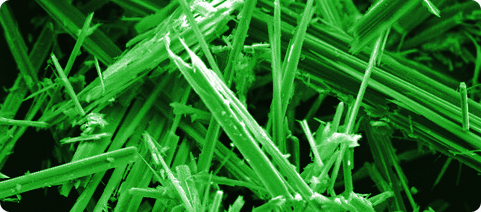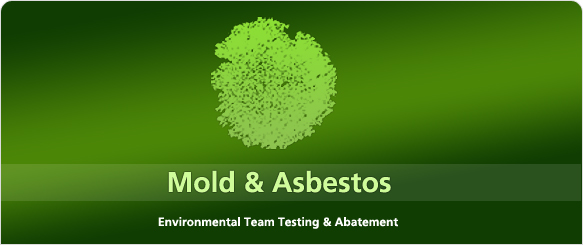What is Asbestos?

Asbestos is the common name for any variety of silicate materials that are fibrous in structure and are more resistant to acid and fire than other materials. It has two forms, serpentine and amphibole, and is made of impure magnesium silicate. Asbestos is used for thermal insulation, fire proofing, electrical insulation, building materials, brake linings and has been used in numerous industries.
Serpentine and amphibole asbestos both exhibit physical and chemical resistance to high temperatures and applied force. The raw ore of both forms is made up of fibrous strands. The strands then continue to split into smaller and thinner fibers as disturbance continues and increases.
Asbestos' ore form will initially divide into visible strands, fiber bundles, and individual fibers. But then those visible strands, bundles, and fibers will continue to split into microscopic fibers, bundles, and strands. The splitting can continue on to minute levels of microscopic levels of detection. This process is unique to asbestos and is why airborne asbestos is such a problem. The fibers can become so small that they remain airborne longer and pass undetected by the respiratory dust defenses.
Physical characteristics differentiate the serpentine and amphibole forms. Serpentines divide into curly, wavy fibers that show little resistance to being bent or spiraled. Amphibole fibers are needlelike shards that show great resistance to being bent or curled. Serpentines are like man-made wool in appearance, where amphiboles are like man-made fiberglass.
In addition to the two forms, there are three main types of asbestos: chrysotile, amosite, and crocidolite. Chrysotile asbestos is serpentine and amosite and crocidolite are amphibole. Chrysotile is the chief commercial asbestos today. Amosite is used in insulating materials and crocidolite is used for making asbestos-cement products.
Canada is a chief producer of asbestos, which has some of the largest asbestos mine fields in the world. Other producers are Russia, Zimbabwe, the Republic of South Africa, Cyprus, and the United States of America.
Asbestos is a potent carcinogen, that is, a cancer-causing substance, and is a serious health hazard. It is the known cause of pleural plaques, asbestosis, mesothelioma, and causes cancers of the lung, esophagus, and colon. Diseases caused by asbestos have a long latency period, usually taking ten to forty years before showing any symptoms of the disease. This is especially apparent today, when people who worked with installing asbestos as insulation and other materials in the 1970s are just now coming to realize that they are developing cancer at alarming rates.
Because asbestos is hazardous, the state of Pennsylvania the requires the removal, collection, transportation and disposal of asbestos to be regulated by the DEP. Only those who are certified and approved by the state are authorized to legally remove and dispose of it. Seitz Brothers has a team of highly skilled professionals who are certified to remove asbestos and dispose of it safely for you. Contact Seitz Brothers today to find out how we can help you safely remove asbestos from your pipes, roof, ceiling, siding or any other location in and around your home.
As part of our asbestos removal service, we provide 3 convenient locations covering places like Allentown, Bethlehem and Easton at our Trexlertown location in the Lehigh Valley; or Scranton, Wilkes-Barre and Stroudsburg at our Tannersville office in the Poconos; and Hazleton, Reading, and Lancaster at our Tamaqua Headquarters in Eastern and Central PA. We also service parts of New Jersey and New York. Call today to schedule an appointment and see why you are calling the best asbestos removal service in PA.





